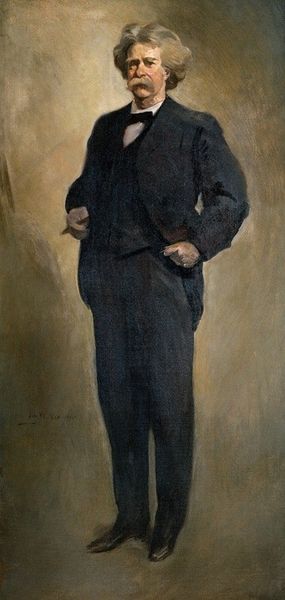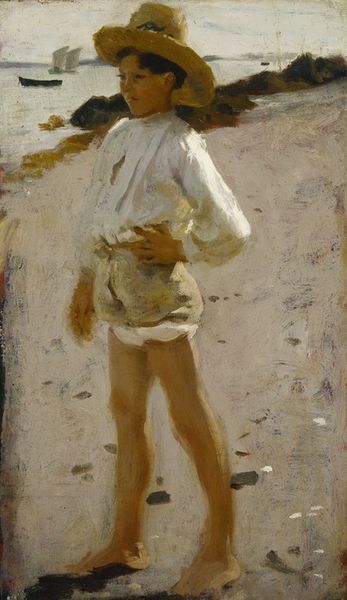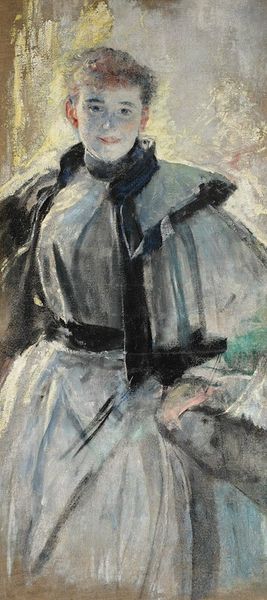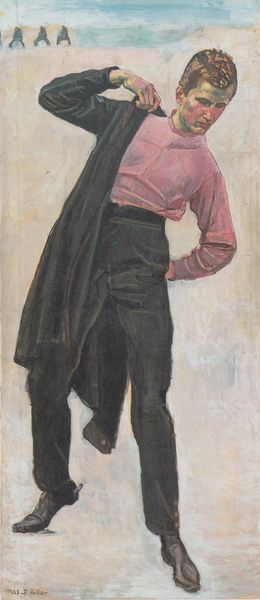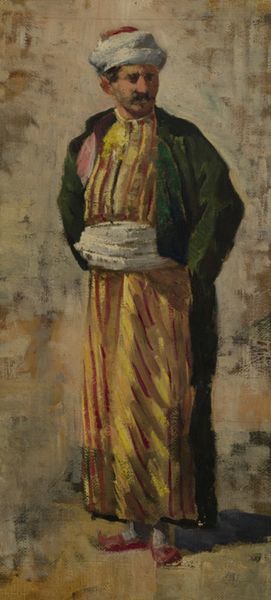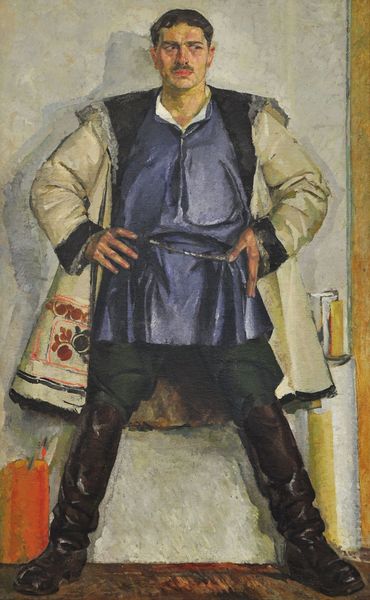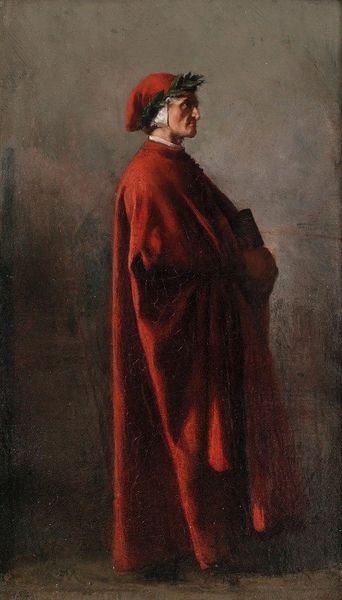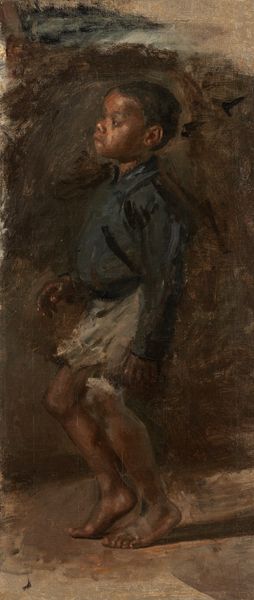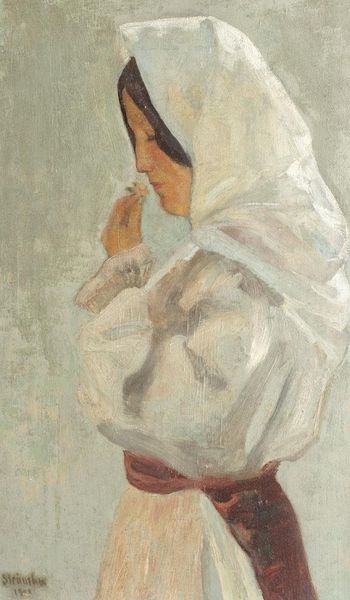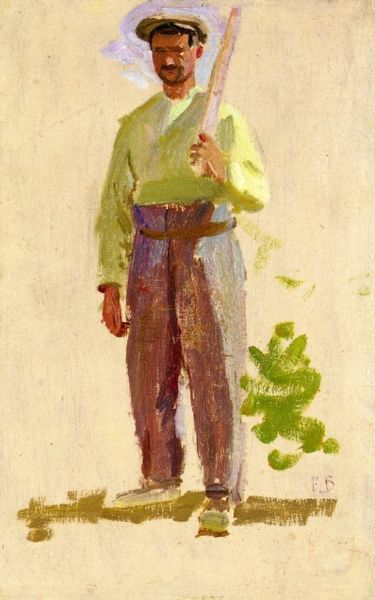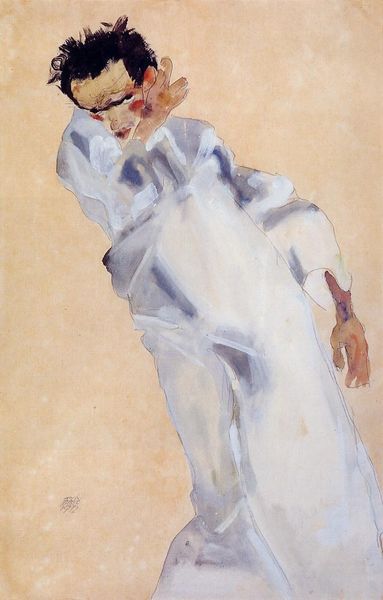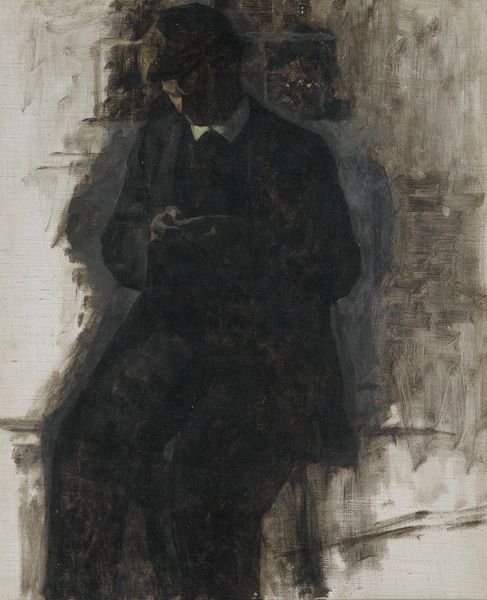
#
figurative
#
possibly oil pastel
#
oil painting
#
portrait reference
#
portrait head and shoulder
#
animal portrait
#
animal drawing portrait
#
portrait art
#
fine art portrait
#
self portrait
#
digital portrait
Copyright: Public Domain: Artvee
Curator: Welcome, let’s delve into this arresting portrait by Ilya Repin, entitled "Leo Tolstoy Barefoot". Editor: Immediately striking. The direct gaze, the simple garb… it speaks volumes about renunciation. A calculated earthiness. Curator: Indeed, Tolstoy’s rejection of aristocratic luxury is central. Repin, as a fellow traveler in radical thought, emphasizes Tolstoy's conscious identification with the peasantry. Observe the very deliberate symbolism in his bare feet, an act of solidarity that reverberated through intellectual circles. It directly challenges norms regarding class and identity. Editor: The plain tunic, too—almost uniform-like—and stark against the muted greens of the forest behind him. I'm drawn to how the very visible brushstrokes work to define texture – the coarse weave of the fabric, the lines etched on his face, the roughness of the ground underfoot. Everything appears deliberately unrefined. Curator: Exactly. There’s a deliberate tension between the artist's technique and the subject's philosophy. Repin's realism, while masterful, elevates the material conditions of the peasant—a class usually ignored in fine art—while portraying Tolstoy’s own manufactured relationship to that condition. We are confronted with the question of authenticity and the inherent contradictions within acts of renunciation when viewed from a place of privilege. Editor: Right. One wonders about the labor involved in creating this image – the sourcing of materials, the physical act of painting itself, the studio conditions versus the natural setting implied. And consider the ultimate audience: who was this portrait meant for? Certainly not the barefoot peasantry Tolstoy identified with. Curator: An important point. This work sparks crucial conversations about representation and intention. We’re not just seeing Tolstoy, we’re seeing a carefully constructed image laden with political and philosophical meaning. Editor: Yes, a potent reminder that even the simplest image can be deeply complex in its making and messaging. I think it holds true value now by allowing us to question how symbolism intersects with social identity. Curator: It invites crucial questions that continue to resonate, reminding us that art is as much about ideas and historical forces as it is about aesthetics. Editor: Absolutely. An enlightening encounter, really prompting thought of how the simple tools with care bring change.
Comments
No comments
Be the first to comment and join the conversation on the ultimate creative platform.
